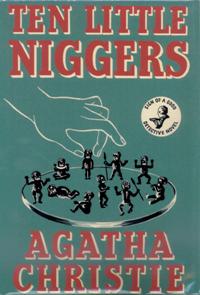And Then There Were None is a detective fiction novel by Agatha Christie, first published in the United Kingdom by the Collins Crime Club on 6 November 1939 under the title Ten Little Niggers. The title was changed in the United States by Dodd, Mead and Company in January 1940 toTen Little Indians, as the original title, which originally derived from antiquated English terminology, is considered racist by modern standards. In the novel, ten people, who have previously been complicit in the deaths of others but have escaped notice or punishment, are tricked into coming onto an island. Although the guests are the only people on the island, each is murdered one by one, in a manner paralleling, inexorably and sometimes grotesquely, the old nursery rhyme, Ten Little Indians. The UK edition retailed at seven shillings and sixpence and the U.S. edition at $2.00. The novel has been made into several films and adapted for radio.
From the book
Educational achievement among African American students is alarmingly low. In urban centers throughout the country over 70% of African American students (primarily boys) do not graduate from high school with their peers (Smith, 2004). In Cleveland, Ohio for example, only 19% of Black male high school students graduated with their peers in the 2001-2002 school year (Holzman, 2004). The achievement pattern in science, technology, engineering and mathematics (STEM) education is even worse. According to data from the National Educational Longitudinal Study (NELS), African American 12th graders (male and female) score lower than Caucasian 8th graders on the science portion of the standardized NELS exam (Muller, Stage, & Kinzie, 2001). This represents a performance difference of four years.
By any objective measure the educational underachievement of African American students is nothing short of a tragedy. Compounding the tragedy is the fact that African American students in particular (and African Americans in general) are inheritors of a tremendously great legacy of academic achievement in all areas, especially STEM. From Dogon astronomy, medicine in Kemet, and steel making in Tanzania (van Sertima, 1984) to Lattimer’s light bulb, Carver’s genius in founding the field of chemurgy (which is the use of agricultural products in industry) (Kremer, 1987), and Dr. Mark Dean pioneer computer developer at IBM, children of African descent have every reason to shine like stars in the science classroom.
From the book
Educational achievement among African American students is alarmingly low. In urban centers throughout the country over 70% of African American students (primarily boys) do not graduate from high school with their peers (Smith, 2004). In Cleveland, Ohio for example, only 19% of Black male high school students graduated with their peers in the 2001-2002 school year (Holzman, 2004). The achievement pattern in science, technology, engineering and mathematics (STEM) education is even worse. According to data from the National Educational Longitudinal Study (NELS), African American 12th graders (male and female) score lower than Caucasian 8th graders on the science portion of the standardized NELS exam (Muller, Stage, & Kinzie, 2001). This represents a performance difference of four years.
By any objective measure the educational underachievement of African American students is nothing short of a tragedy. Compounding the tragedy is the fact that African American students in particular (and African Americans in general) are inheritors of a tremendously great legacy of academic achievement in all areas, especially STEM. From Dogon astronomy, medicine in Kemet, and steel making in Tanzania (van Sertima, 1984) to Lattimer’s light bulb, Carver’s genius in founding the field of chemurgy (which is the use of agricultural products in industry) (Kremer, 1987), and Dr. Mark Dean pioneer computer developer at IBM, children of African descent have every reason to shine like stars in the science classroom.

No comments:
Post a Comment
leave your opinion